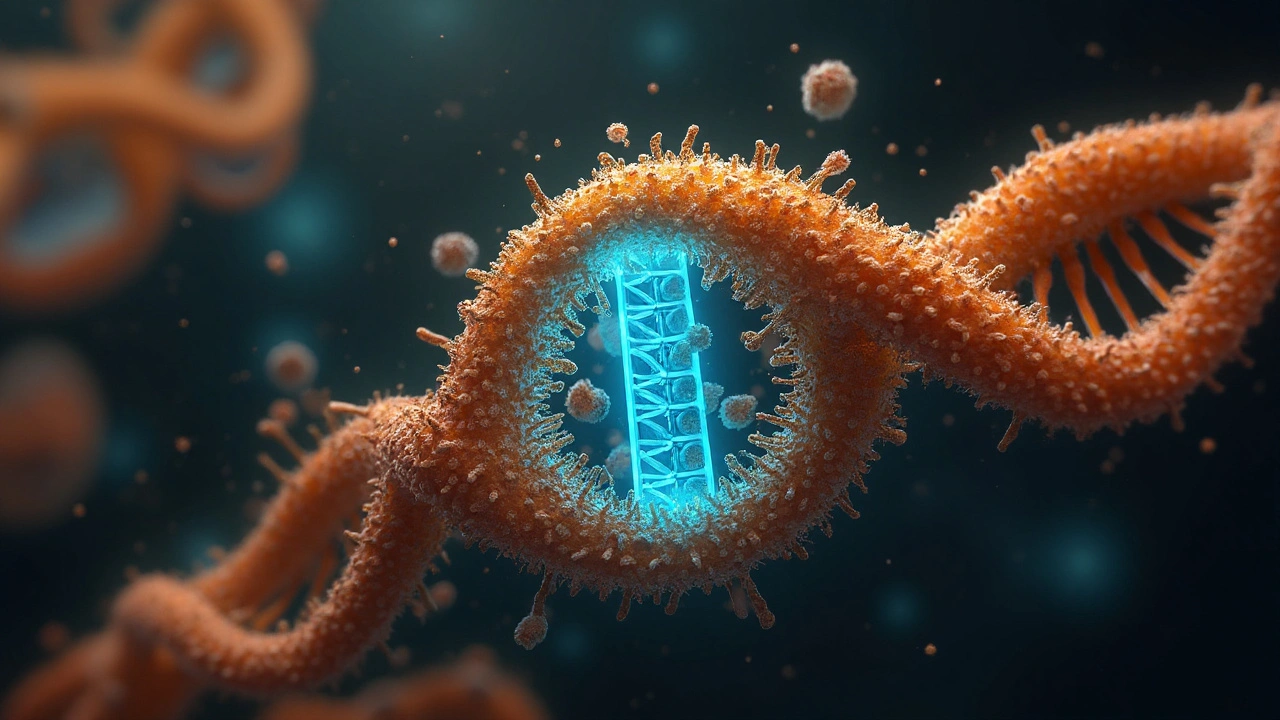Linezolid Mechanism of Action: How This Antibiotic Takes Down Bacteria
If you’ve ever wondered why doctors choose linezolid for stubborn infections, the answer lies in its unique way of stopping bacteria from making proteins. Unlike many antibiotics that smash cell walls or mess with DNA, linezolid sneaks into the bacterial ribosome – the tiny factory that builds proteins – and blocks it in a very specific spot.
Where linezolid works in the bacterial cell
The ribosome is made up of two subunits, 50S and 30S. Linezolid latches onto the 50S subunit right at the peptidyl‑transferase center. That’s the part of the ribosome that joins amino acids together to form a protein chain. By sitting there, linezolid stops the transfer of the growing peptide from the tRNA in the P‑site to the amino acid in the A‑site. In plain English: the ribosome can’t finish the protein, so the bacteria can’t grow or multiply.
This blockage is *bacteriostatic* – it doesn’t kill the cells outright, but it holds them in place long enough for the immune system to clear the infection. That’s why linezolid works well for Gram‑positive bugs like MRSA, VRE, and some resistant Streptococcus species.
Key points to remember about linezolid
1. Target specificity – Because linezolid zeroes in on the 50S subunit, it has little effect on human ribosomes, which keeps side effects lower than many older antibiotics.
2. Oral and IV options – The drug’s chemistry lets it be taken by mouth with the same effect as an IV dose, making it handy for step‑down therapy.
3. Resistance clues – Some bacteria develop resistance by mutating the 23S rRNA gene or acquiring the cfr gene, which adds a methyl group that blocks linezolid’s binding site. Knowing this helps doctors pick the right drug early.
4. Monitoring needed – Long‑term use can affect blood counts and mitochondria, so doctors often check CBCs and watch for signs of anemia or neuropathy.
5. Drug interactions – Linezolid is a weak MAO‑inhibitor, so avoid tyramine‑rich foods and certain antidepressants while on therapy.
In practice, the drug’s quick absorption (peak levels in about 1‑2 hours) and steady blood levels make dosing simple – usually 600 mg every 12 hours. That steady rhythm keeps the ribosome blocked consistently across the infection site.
Bottom line: linezolid’s clever trick is to jam the protein‑making machine of tough Gram‑positive bacteria, giving your immune system a chance to win the battle. If you’re dealing with a resistant infection, knowing how linezolid works can help you understand why your doctor chose it and what to watch for during treatment.

Linezolid Mechanism of Action: In‑Depth Review of How This Oxazolidinone Stops Bacteria
A detailed look at linezolid’s mechanism, its interaction with bacterial ribosomes, clinical implications, resistance patterns, and how it stacks up against similar drugs.